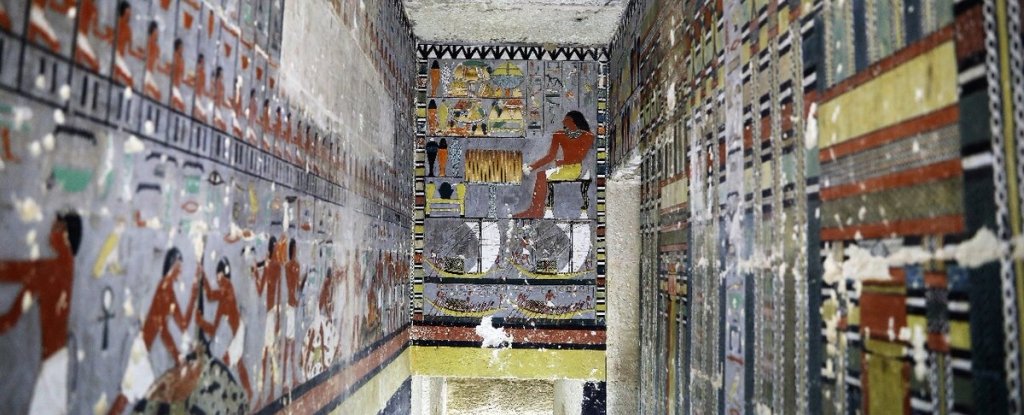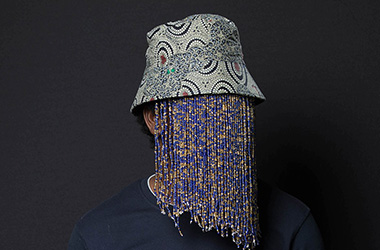Image Source[Egyptian Ministry of Antiquities via Twitter]
Two newly-discovered tombs give a dazzling, exceptionally-preserved glimpse into the deaths of ancient Egyptians.
Two new tombs have been discovered in Egypt in an almost pristine state. One of the tombs is part of the Akhmim necropolis in the province of Sohag, and dates back to the Ptolemaic era of Egypt (about 2,000 years ago). The other tomb, from Saqqara, is significantly older, dating back over 4,000 years.
The sands of time
“It’s one of the most exciting discoveries ever in the area,” said Mostafa Waziri of the Supreme Council of Antiquities.
Both tombs are in an incredibly well-preserved state. The murals on their walls are virtually intact, their discoverers report, with the colors unfaded by time.
The Sohag tomb was discovered after a gang of tomb robbers — who were carrying out an illegal excavation — was arrested nearby, according to the Egyptian Ministry of Antiquities. It dates back to the Ptolemaic era and belonged to a senior official named Tutu and his wife. The tomb comprises two rooms, both adorned with lavishly painted walls. Inside Tutu’s tomb, archeologists found two limestone sarcophagi and an exceptionally well-preserved mummy. More than 50 mummified animals were also found in this tomb, including ibis, falcons, eagles, dogs, cats, and shrews.
The other tomb, from Saqqara, dates back to the time of Pharaoh Djedkare Isesi. It seems to have belonged to a high-ranking official named Khuwy. The tomb itself also suggests that this Khuwy was related in one form or another to Djedkare Isesi. It is an L-shaped building with a small corridor, an antechamber, and a large main chamber adorned with murals showing Khuwy seated at a table of offerings. In addition, the tomb also boasts a tunneled entrance (which are usually the domain of royal tombs and pyramids) and colors traditionally reserved for royalty in its murals. Archeologists also found Khuwy’s mummy and the canopic jars in which organs are placed for burial (which were sadly broken into pieces) at the tomb.
At a presentation unveiling the tomb of Tutu, Waziri said he hoped the discovery would “draw the world’s attention to the civilization and antiquities of Egypt.” This feeds into the sustained efforts Egypt has been making to publicize its archeological findings in recent months in an effort to “increase tourism interest in a destination that suffered following a 2011 uprising,” CNN adds.
At the end of last year, the Ministry unveiled two dazzling tombs, one dating back 3,500 years, and another 4,400 years old, belonging to a priest named Wahtye. Another 2,500-year-old tomb was found to contain dozens of mummified cats and scarab beetles.
Source: ZME Science
*The views of the above article are those of the author and do not necessarily reflect the views of Africa Speaks 4 Africa or its editorial team.




